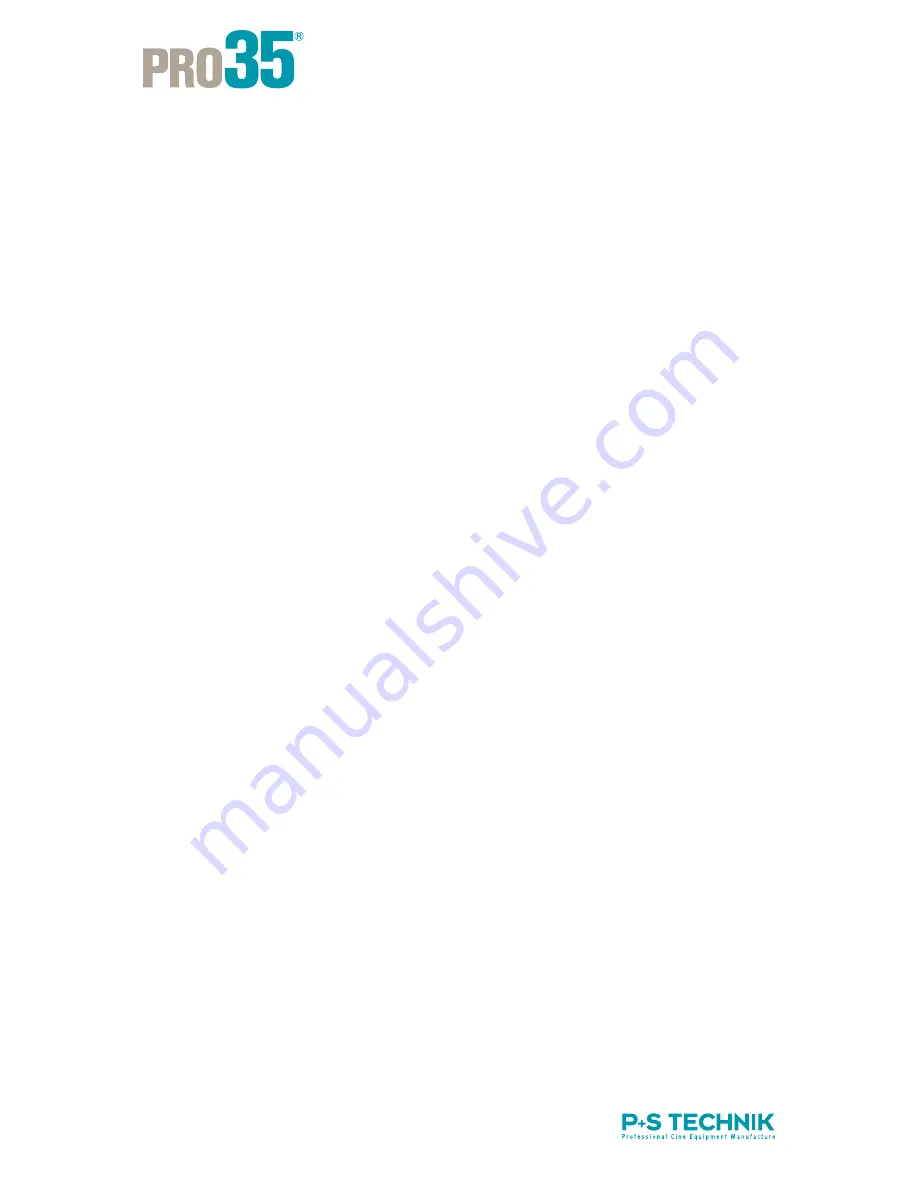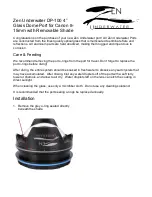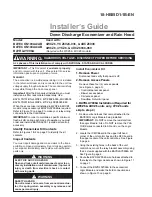
40
front lens serves to adjust the images depth of fi eld; the iris of the Image Converter only
serves to adjust exposure.
How does the user adjusts the exposure (without affecting the depth of fi eld)?
In order to control exposure (i.e. when light is too intense like in bright daylight) without
affecting the depth of fi eld we recommend to use the iris of the Image Converter.
If this ND function is insuffi cient and the image remains overexposed, closing the fi lm
lens iris may not offer the required limited depth of fi eld or may project too much grain on
the video image. Two possible remedies:
1) Use the ND function of your video camera or
2) Use a ND fi lter in front of the fi lm/photo lens to decrease the light entering the system
We do not recommend to increase the shutter speed of the camera in order to control
exposure. In this case please consider, that the visibility of the targe’ts structural pattern
changes and might cause disturbance or interferences in your image. Although it’s possi-
ble to eliminate these interferences by adjusting the speed control of the target.
Is it possible to adjust exposure by the camera’s shutter speed? What is to be
considered in this case?
When decreasing the shutter speed of your camera in order to control exposure please
consider, that the visibility of the target’s structural pattern changes and might cause
disturbance or interferences in your image.
What is to be considered when shooting with variable frame rates
(i.e. Panasonic “Varicam”)?
When decreasing the shutter speed of your camera in order to shoot at variable (higher)
frame rates, please consider, that the visibility of the target’s structural pattern changes
and might cause disturbance or interferences in your image. By adjusting the target’s
speed control it is possible to eliminate these interferences.
Why is it not recommended to adjust exposure by stopping down the front
lens aperture?
There are different reasons:
1) The higher the T-stop (T4.0 or higher i.e. T11), the more apparent the grain effect will
be. The other way around: the lower the T-stop (T4.0 or lower i.e. T1.2), the less appa-
rent the grain effect will be.
2) When closing the front lens aperture more than about 2.5 stops, the depth of fi eld
is comparable to a normal video lens. In this case it makes no sense shooting with the
PRO35 and fi lm lenses. In order to control exposure it is more advantageous to use the
Image Converter’s or the camera’s ND function.
When testing different shutter speeds I realised that at 1/100 sec the structu-
ral pattern of the target becomes apparent. Which shutter speed do you re-
commend?
We recommend to use standard shutter speeds with the current version of the PRO35.
19.
20.
21.
22.
23.










































